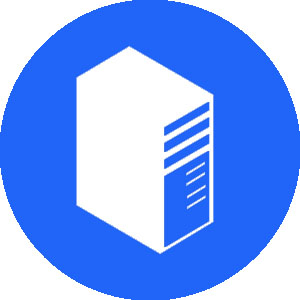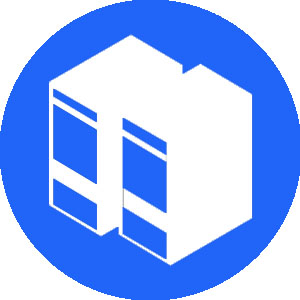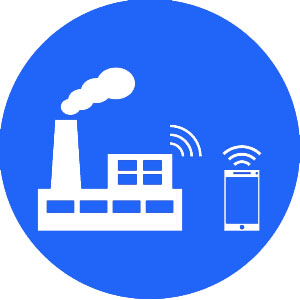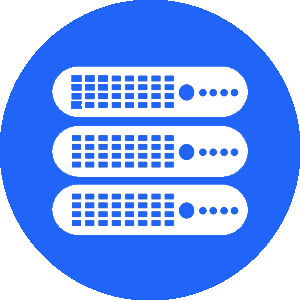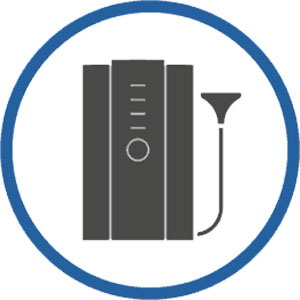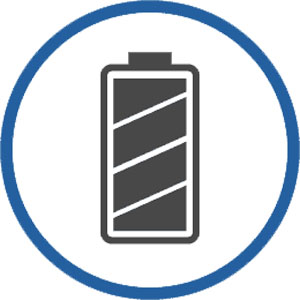Building a future proof network with edge data centres
Edge data centres are transforming the infrastructure and geography of networks. But what is an edge data centre and why should you consider it for your business?
Until recently, data centre providers focused on consolidation and centralisation into ever larger facilities. Located in and around key population centres, these data centres typically served a wide geographic area. This resulted in some users being hundreds of miles or further from the data centre.
As line speeds increased, the experience of users further from the facility became nearly indistinguishable from those closer. With the rise of streaming services, the cloud and software as a service (SaaS) the nature of network traffic changed fundamentally. Suddenly there was a need to move ever increasing volumes of high-bandwidth data to users all over the wider network. Users began to demand low latency cloud services in locations far away from the existing hubs.
The solution was to move the data closer to users by building smaller data centres out at the edge of the network. As more providers saw the benefits, edge computing was born. Demand for these services continues to grow, making it likely that this trend will continue. Considering edge as part of your infrastructure plan is essential to keep your business competitive and deliver on the needs of your customers.
What is an edge data centre?
An edge data centre is a facility located outside of a main population centre that serves at least 50% of local users with the majority of their network content.
Edge data centres can broadly be split into three main camps – content delivery servers, data storage and compute centres.
Content delivery servers primarily meet the needs of home users, serving web pages and streaming content.
Data storage servers are often used by enterprises and large organisations to provide access to large databases that have been moved into the cloud.
Compute centres provide local data processing services or applications and are typically implemented for enterprise use.
The infrastructure used to deliver edge services can also vary. Colocation facilities are in effect smaller versions of a typical data centre. They offer content providers and cloud services space to install their own equipment closer to their users. Micro data centres are often used to deliver application hosting and data storage for enterprise use. They can consist of anything from a single rack to a self-contained data centre in a shipping container format. These micro data centres offer full control of the hardware, software, data and connections. Suppliers such as Rittal also provide complete off-the-shelf solutions.
What are the benefits of edge data centres?
Taking your data to the edge can offer many benefits – both to your business and your users including:
• reduced bandwidth costs
• faster, lower latency delivery of content and services
• simpler, cheaper infrastructure
• improved customer experience
• improved security and server performance.
Reduced bandwidth costs
Perhaps the most important benefit for businesses is the reduced cost of data transit that edge data centres provide. By physically locating the data closer to the end users, the cost of network transfer can be dramatically reduced. With the increase in high-bandwidth applications, these savings only will grow. The increasing availability of cost-effective colocation facilities will help to further reduce costs in future.
Installing a micro data centre on premises can massively reduce the bandwidth costs for an enterprise by bringing bandwidth-intensive content and data in-house. As micro data centres can be installed almost anywhere, they can provide businesses with a low-cost, scalable edge solution.
Faster delivery of content and services
Reducing the physical distance between the server and the user not only reduces the cost of data transit. It also reduces latency and load times for end users. As more and more devices become connected, this will become increasingly important. Many internet of things (IoT) applications need real time data transfer and offload processing to the server. This makes response times critical for effective operation.
On the enterprise side, reduced load times and lower latency can lead to increased productivity and fewer synchronisation errors.
Simpler, cheaper infrastructure
Serving fewer users over shorter distances can make your infrastructure requirements simpler. The distributed nature of edge services can also introduce built in redundancy. In edge implementations, several smaller servers will act as local mirrors. If one server goes down the data and content can be restored from one of the remaining servers and traffic can be rerouted to the next nearest node. This can reduce hardware costs, increasing the savings that edge provides over more traditional implementations.
For micro data centre installations, a number of off the shelf systems are available in a wide range of configurations, such as Rittal’s Micro Data Centre and RiMatrix S ranges. These products allow enterprises to benefit from economies of scale and can also reduce the cost of specifying and procuring appropriate hardware.
Improved customer experience
Today’s network users are demanding – they expect the services they pay for to work quickly and flawlessly every time. Poor customer experience is often related to latency, but its significance to service providers means that it should be considered separately. Providing customers with lightning fast, responsive services, applications and content ensures they will continue to be satisfied and won’t look elsewhere. This can support retention and encourage increased spend when providers introduce enhanced services, such as 4K or HDR.
In enterprise settings, faster access to data and more responsive applications will provide staff with a better experience. Where these services are used to provide services to clients, this improvement in user experience can be passed on.
Improved security and server performance
Decentralising cloud content and services can reduce the impact of network disruption and increase overall performance. The distributed nature of edge data centres means that peaks in traffic are easier to mitigate. This also means that the impact of distributed denial of service (DDoS) attacks can be limited. Issues such as power failures or hardware issues will also be limited in their impact as the edge data centre serves a smaller population base and may allow re-routing of traffic.
For businesses making use of highly sensitive or personal data, edge data centres allow for easier management of access, data retention and processing policies. On-premises micro data centres enable organisations to implement their own physical and digital security measures to guarantee the security of their data.
How are edge data centres used?
Edge data centres have applications wherever users are distributed across the network. The way they are used typically falls into one of three categories:
• content delivery
• data storage
• compute.
The requirements for and implementation of these different use cases can vary considerably. But their location on the edge of the network and the proportion of local users they serve gives them a commonality that makes the term ‘edge data centre’ a useful categorisation.
Edge data centres for content delivery
The rise of HD and now 4K video content has made video streaming one of the fastest growing high-bandwidth applications. As demand and quality of content increases, it puts considerable strain on traditional hardware infrastructure. The internet’s infrastructure and transmission protocols were designed around reliability rather than latency. This means that physical distance can have a significant impact on the quality of experience.
The solution to this has been to cache content in facilities closer to the user, rather than transferring the data over long distances. For popular videos on streaming services such as Netflix, YouTube and BBC iPlayer, this can reduce bandwidth usage by staggering amounts. Content delivery networks (CDN) are also adopting this approach. These services distribute content for a wide range of clients including popular, high-traffic websites.
Typically these businesses will take up space in a colocation edge facility. Operating in the same way as a small or medium data centre, these facilities serve smaller metropolitan areas and rural regions, greatly reducing the transfer distance.
Edge data centres for data storage
The amount of data generated by individuals and businesses has risen exponentially in recent years. As with consumer content, the transfer of this data can both put a strain on networks and reduce efficiency. For businesses and organisations that require quick and easy access to large volumes of data, edge data centres can provide an alternative to solely cloud-based solutions. Distribution also adds greater resilience, providing alternative data sources if one should fail, ensuring business continuity.
Edge solutions for data storage can be configured in a number of different ways depending on the specific requirements of the organisation. Colocation may be suitable – particularly if the data is to be served to a number of different locations within the region. If data security and integrity or low latency are more business critical, an on-premises micro data centre may be more appropriate. On-premises servers may be particularly suitable where the edge server is used to guarantee availability in case the central cloud-based server goes offline.
Edge data centres for compute
Edge data centres can bring compute power closer to where it’s needed for industrial and IoT applications. This can maximise the value of real time monitoring and automation.
As the number of connected devices grows, colocated compute hardware will increasingly become a feature of edge data centres. Smart devices and sensors in homes and offices across the network will generate vast amounts of data that is sent over the network for processing. The emerging market of digital assistants such as Google Home and Amazon Echo could result in a further increase. Edge data centres will allow this processing to take place closer to the source. Any instructions that result from the data can then be sent back to the device more quickly.
For industrial applications on-premises micro data centres may be more suitable. The hardware may be dedicated to compute functions or provide combined compute and data storage. This will allow the fastest possible processing of sensor data for automated systems, increasing efficiency and performance.
Micro data centres are also available in portable, self-contained packages that allow for on-site compute and data storage. These can be useful in mining and oil and gas exploration, as well as disaster recovery.
Why edge applications will grow in 2018
Edge data centres have seen a rapid expansion in the last few years because of the changing nature of network traffic. The popularity of video streaming and on-demand services, as well as increasing connectivity between devices suggests that the need for edge data centres is only going to increase. As the market matures and new technologies come on board, there are a number of factors that will increase the demand for edge applications:
• increasing customer expectations
• concerns over data security
• future-proofing
Customer expectations
As more content and service providers move their services to the edge, customers will grow accustomed to the responsive, low latency user experience that this provides. This will drive more providers to edge-based delivery in order to remain competitive. For enterprises, staff expectations will be shaped by their experiences of other networked systems both at work and at home. Edge applications can reduce staff frustrations, while also providing tangible business benefits.
Data security
Instances of high-level data breaches are becoming increasingly common, even among businesses that have been considered secure. Tightening data protection policies, such as the upcoming GDPR legislation, make data security an increasing concern. Edge solutions provide businesses with more control over their own data security measures. On-premises hosting allows for tight physical security where required, as well as complete flexibility over server configuration which can simplify patching processes.
Future-proofing
The need for high-volume data transfer is on an upward trend and is only likely to increase. With 5G mobile internet on the horizon and the IoT revolution within reach, the future requirements for network infrastructure have edge at their heart.
Building the edge
The edge of the network presents a diverse set of requirements for hardware and implementation. UPS Systems plc has the knowledge and product range to support your business in implementing effective edge solutions for any application.
To find out more about how we can help, or for more advice on how edge data centres can support your business please contact us. We know all about power protection and can provide you with the UPS system or genertaor that suits your requirements. We supply from all the majpr m,anufacturers including Riello UPS, AKSA generators, APC UPS and Pramac generators.









